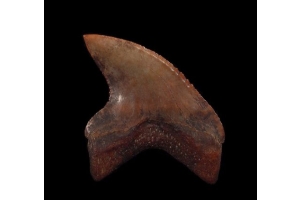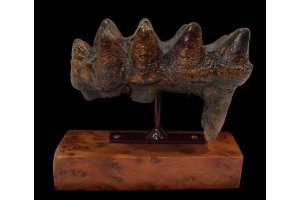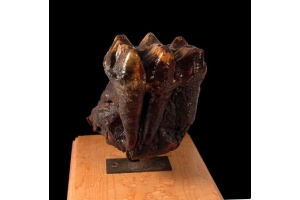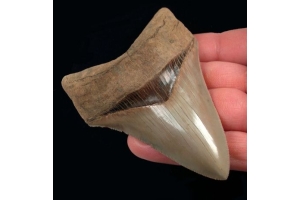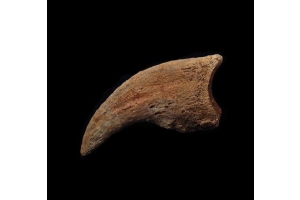Monthly Archives: December 2020
- December 18, 2020
Finding fossils is certainly exciting — you found traces of something that existed millions of years ago. But preserving them is difficult, as they are quite delicate, demanding your utmost attention. To keep them safe as historical items, it’s vital to put proper care in place, and this stands true even for the fossils that you buy, whether it’s Hemipristis shark tooth for sale or an extinct pine cone.
Here’s your quick guide to caring for fossils:
Clean them before storage
The first step to preserving fossils is to clean them to get rid of dirt and residue. For fossils found on the land, you can use a soft brush for cleaning. For those discovered from a sea setting, use a mild solution of bleach and water. Soak them in the solution for a few minutes and then brush them to remove salt residues. Make sure to handle and brush them gently, as they are fragile.
- December 15, 2020
We all have seen them, touched them, and wondered about them, but not a lot of us know what actually happens within a female pine cone. We are specifically talking about the female pine cone not because we have anything against the male cones. The truth is, the majority of the visible cones in the forest are mostly female ones. The reason behind this is male cones’ smaller size, which makes them less conspicuous than its counterpart.
In this article, we’ll explain to you in brief what happens inside the female cone. We’ve listed down some points for this purpose. Let’s take a look at them.
- Let’s start with female pine cone formation. In the months of spring, mostly in the uppermost branches of the pine tree branches, small, green female pine cones begin to form. They come out of those branches that instead of adapting leaves, have formed scale-like structures. In these scales, you will find on the upper side,
- December 11, 2020
Sperm whale, also known as cachalot, is the world’s largest toothed whale and is easily recognized by its enormous head and narrow jaw. These active predators, who prey on squids and bony fishes, are dark blue, brown, and grayish with white patches on their belly.
Despite big, square head, sperm whales are good at catching their preferred prey with their large conical teeth. Not only do they have large brains, but they also have the most powerful sonar that they use to find prey in the deep ocean. They have an incredible ability to dive to incredible depths in the sea. They can even stay down for several hours, which increases the likelihood of catching prey in the deep. Due to this predatory behavior, sperm whales generally live in deep water and are rarely seen along the coast.
Specialized sonar organ, known as a melon, and very large brain contribute to sperm whale’s characteristic block-shaped head, which is easy
- December 10, 2020
When Steven Spielberg made his 1993 blockbuster, Jurassic Park, not much was known about the Tyrannosaurus rex, or T. rex, as it is more popularly known. Back then, there were only around eight skeletal remains in the fossil record. But since then, more skeletons have been unearthed, which have changed paleontologists’ and even the general public’s understanding of the “king of dinosaurs”. In the recent years, there are numerous findings that have upended the preconceived ideas of how this creature looked, behaved and ate. Here aresome of these ideas that have been proved to be wrong.
- December 08, 2020
When we think of sinister creatures lurking in the vast oceans, the shark is probably the first name to come to mind. Sharks are the ultimate predators, but they are also one of the most ancient creatures to ever live on Earth. They first evolved around 450 to 455 million years ago, and are far more ancient than even the first dinosaurs. They were there when all five mass extinction events took place and wiped almost all life off the planet, starting from the Ordovician - Silurian extinction to the Cretaceous - Paleogene extinction, but sharks survived it all. Here are some of the top prehistoric ancestors of the modern-day sharks (in no particular order):
1. Scissor-toothed shark
Scissor-toothed sharks lived around 300 million years ago, and the largest, named E. giganteus, would grow into the size of the modern great white. The shark was characterized by a uniquely curved jaw that it used to not
- December 04, 2020
Loved the Jurassic Park franchise as a child? Watched the terrifying Red Claw dinosaur in awe in ‘The Land Before Time’ and was fascinated by his size? Then chances are that you are still interested in these prehistoric creatures that ruled the land and the seas millions of years ago.
Given that popular culture is so interested in these reptiles, we need not really go into the details regarding why dinosaur fossils are so much in demand! However, buying dinosaur fossils can be a formidable challenge as so many fakes are doing the rounds. Where to buy one from? How do I know that a fossil is original? Will I end up paying too much? These are just some of the questions that run through the average buyer’s minds, which is justifiable since fossils are rare collector’s items.
But not to worry. In this blog, we will share a few tips with the help of which you can start the perfect collection:
- December 03, 2020
When you think about creatures residing in the deep that spark your primal fear, sharks definitely come to mind. From dangerous extinct species like Megalodon to prehistoric Mako sharks, the list is long. Let’s not forget about the modern sharks or those oceanic predators that began to appear close to 100 million years ago. Modern Mako sharks are closely related to the Great White shark and are one of the most powerful predators to prowl the vast ocean waters today. But did you know they have been featured in The Old Man and the Sea, one of Ernest Hemingway’s works? Want to know more about Mako sharks? Read on!
- December 01, 2020
Do you know the fourth-largest shark to prowl our oceans? It is the Tiger shark. Weighing approximately 1300 pounds, the Tiger shark grows up to 15 feet. Only Great Whites, Whale sharks, and Basking sharks are bigger. Good news for fossils collectors, we have Tiger shark teeth for sale!
Apart from being huge, Tiger sharks are bizarre! Want to know why we said that? Read the following facts about these creatures, and you will feel the same way.
You can call them swimming garbage disposals.
Remember the scene from Jaws in which a Louisiana plate is pulled out by Hooper from a dead Tiger shark’s stomach? That is scientifically accurate. Tiger sharks have an insatiable appetite. They eat everything, from other sharks, venomous sea snakes, and albatrosses to manmade objects like rubber



